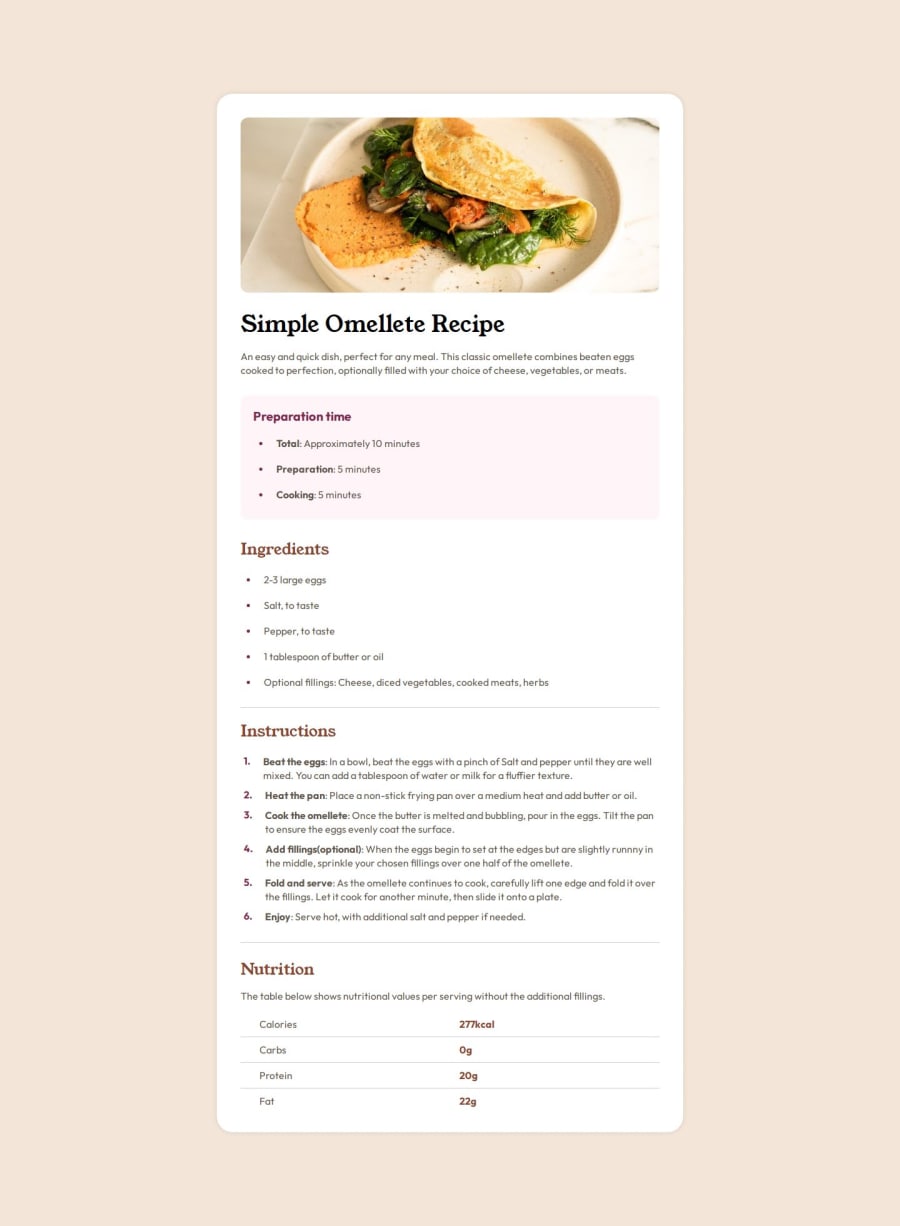
Design comparison
SolutionDesign
Solution retrospective
What are you most proud of, and what would you do differently next time?
I am most proud of the responsiveness of the page as I put in my effort on making it as responsive as I can.
What challenges did you encounter, and how did you overcome them?I found it hard to make the page responsive so I researched and practiced many times to get myself familiar at using media queries to make this page responsive.
What specific areas of your project would you like help with?I want to know the most efficient way on making a website responsive because I know that I still have a lot of room for improvement. Still, all help will be accepted with appreciation.
Community feedback
Please log in to post a comment
Log in with GitHubJoin our Discord community
Join thousands of Frontend Mentor community members taking the challenges, sharing resources, helping each other, and chatting about all things front-end!
Join our Discord
